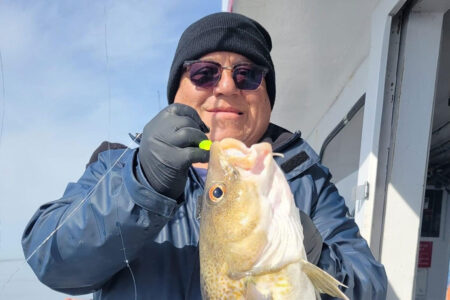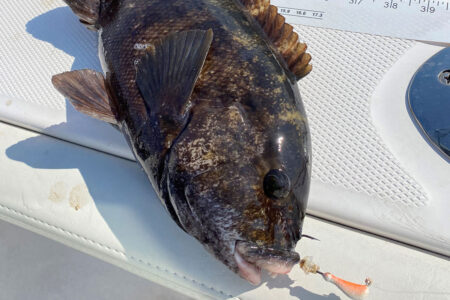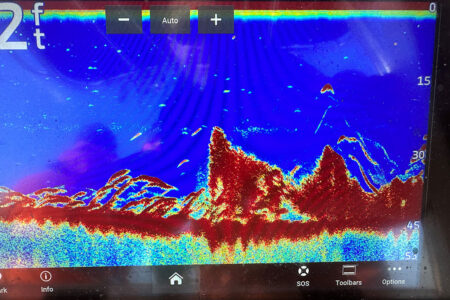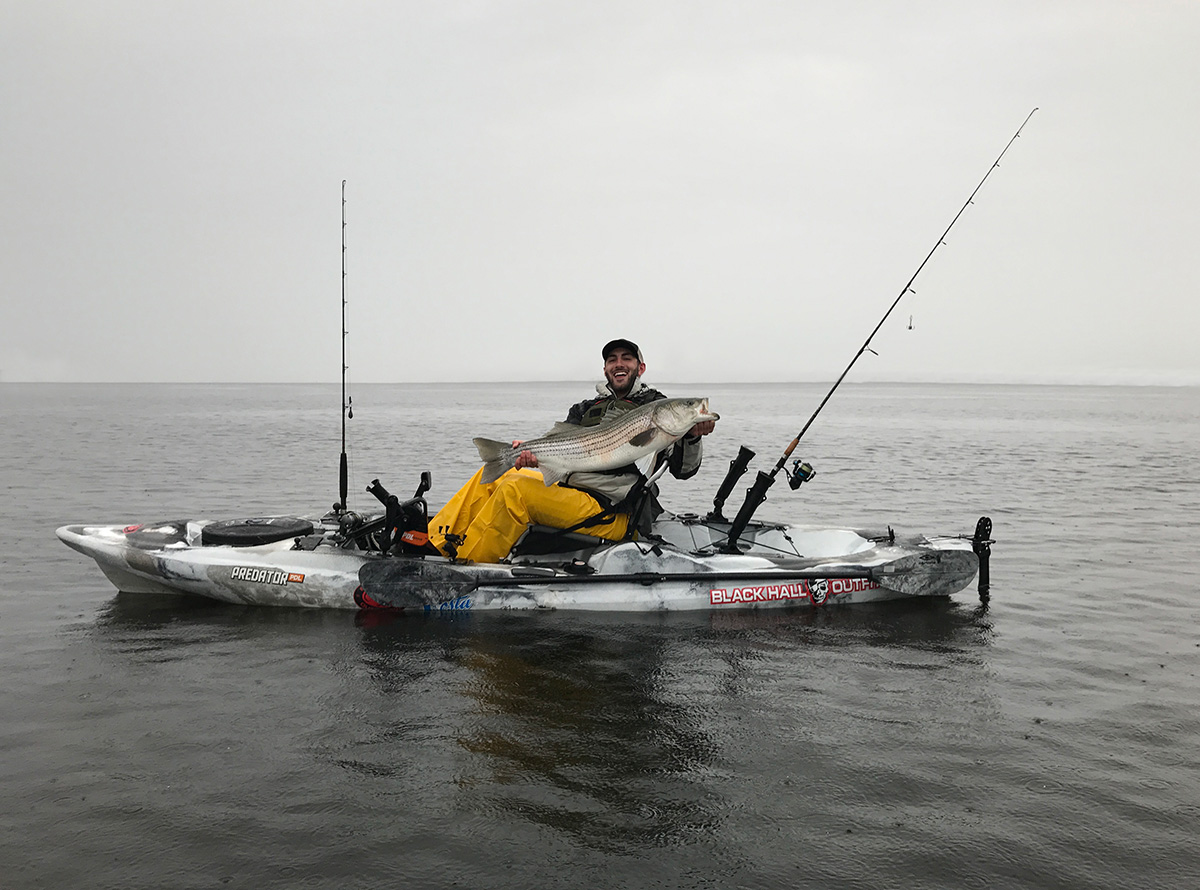
With the hustle and bustle of everyday life, you need to take advantage of every moment you have to fish. Whether it’s work meetings, getting the kids off to sports or working on that honey-do list, time is short. I encourage you to set the alarm a few hours earlier than normal and take advantage of that pre-work bite. It’s so easy to hit the snooze button, but trust me when I say that the fish of a lifetime is waiting for you. Seize the moment, get out of bed and hop in your kayak!
The early-morning hours (roughly 4 to 8 am) are my favorite time to fish as you get to see the world wake up around you. Some scenes that you experience may include a 40-pound-class striper blowing up on a live bunker and taking you on a Nantucket Sleigh ride in your kayak, or watching that smallmouth bass inhale your topwater bait and go airborne. Either way, they are memories that will last a lifetime.
Kayak fishing has grown exponentially in the past few years and with great reason. It’s much more affordable than buying a traditional boat. It allows you the luxury of getting into hard to reach areas where those aforementioned boats can’t go. The exercise is great, too, but most importantly the portability/mobility that a kayak fisherman has is incredible. You can easily car-top a kayak to your favorite spot and be into fish and back before anyone else in the house is awake. Another great benefit of a kayak is that with shrinking shoreline access to fishermen, it opens up anglers to a fishery that is otherwise untouchable.
Summer Patterns
When striped bass and most fish settle into their summer patterns, they are most active during the evening and pre-dawn hours before the sun heats up the water. A big striper isn’t going to expend too much energy when water temps soar. This is a win, win for everyone as it further allows you to maximize your time on the water. After all, we are only playing with two to three hours on the water prior to work, so you may as well make the most of it.
One of my first destinations when I hit the water pre-dawn is flats or shoals where bait is lurking. A kayak such as an Old Town Predator PDL allows you to slowly and quietly coast up onto the flats and surprise any striped bass that are feeding on unsuspecting bait such as silversides or peanut bunker. You might startle a fish or two on your way to your eventual destination, but you’ll spook far fewer in a kayak than in a powerboat. I start fishing well before I get to my end destination; you will be surprised at how many fish you paddle/pedal over.
Stage 1
If time allows as I paddle/pedal my way from the launch to the fishing grounds, I begin fishing by dragging a live eel behind my kayak. I do this until the first signs of light appear on the horizon when I switch it up to a topwater bait. Eeling from a kayak is an easy process and produces surprising results.
You don’t need a giant eel for this, and in fact I’ve caught 30- and 40-pound stripers with shoestring eels. Hook size varies depending on the size of your eel, but I generally start off with roughly a 12-inch eel and a 5/0 Gamakatsu live bait hook. Forty- to 50-pound leader material tied directly to your braid with an Alberto knot alleviates the all too familiar clink that is associated with reeling a barrel swivel in too much and cranking it through your first guide. Hook the eel through its chin and out an eye socket, cast it out behind the kayak and pedal out about 50 feet of line. Once the eel is out far enough engage the reel into strike mode and slowly troll at about 1.5 to 2 mph. It’s a very similar method to dragging a tube and worm. Make sure you have a firm grip on the rod or secure it in a solid rodholder; a bass or blue will hammer that eel and bring your kayak to a screeching halt on the strike.
If you don’t have any eels, fear not; a swimmer such as a Danny or Daiwa SP minnow will substitute nicely. In the summer I opt for larger baits that mimic an adult bunker or shad and generally weed out smaller fish.
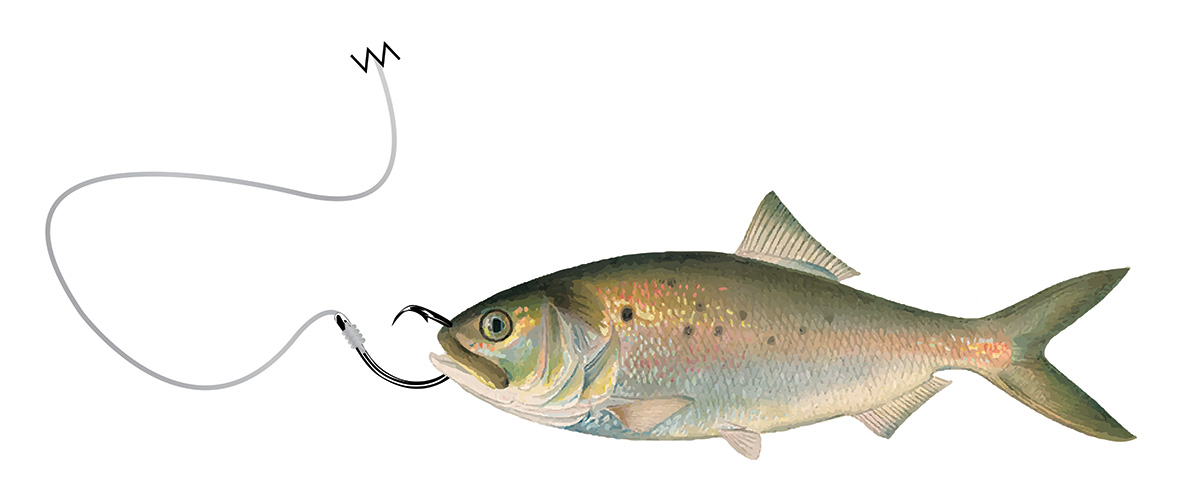
Stage 2
During that false dawn time period, I pack up the eel trolling gear and put on one of two lures. I use either a large Doc spook or an unweighted 9-inch Plum Island Mondo and work it much like a spook. Cast up into the flats while twitching erratically to achieve that classic walk-the-dog action. Bass can’t seem to resist this presentation. I will say that the hits you get in 4 feet of water or less will be absolutely explosive and immediately wake you up.
While using the spook, I let my rod impart the action for me. A mantra that I often repeat to folks is: Let your gear work for you. Don’t work for your gear. A rod or reel is an extension of your arm. In the right hands, you can work a spook for hours without fatigue. My setup for this type of fishing consists of a Van Staal 150 with a medium 7-foot rod to match. Keeping my rod tip parallel to the water, I get into a cadence that makes the Doc or Plum Island dart side to side reeling every other pop of the rod. When you are in tune with this tempo, you can almost sense a hit before it happens. It’s almost like a sixth sense. Keep focus on your plug or soft plastic, look for swirls or follows and be ready.
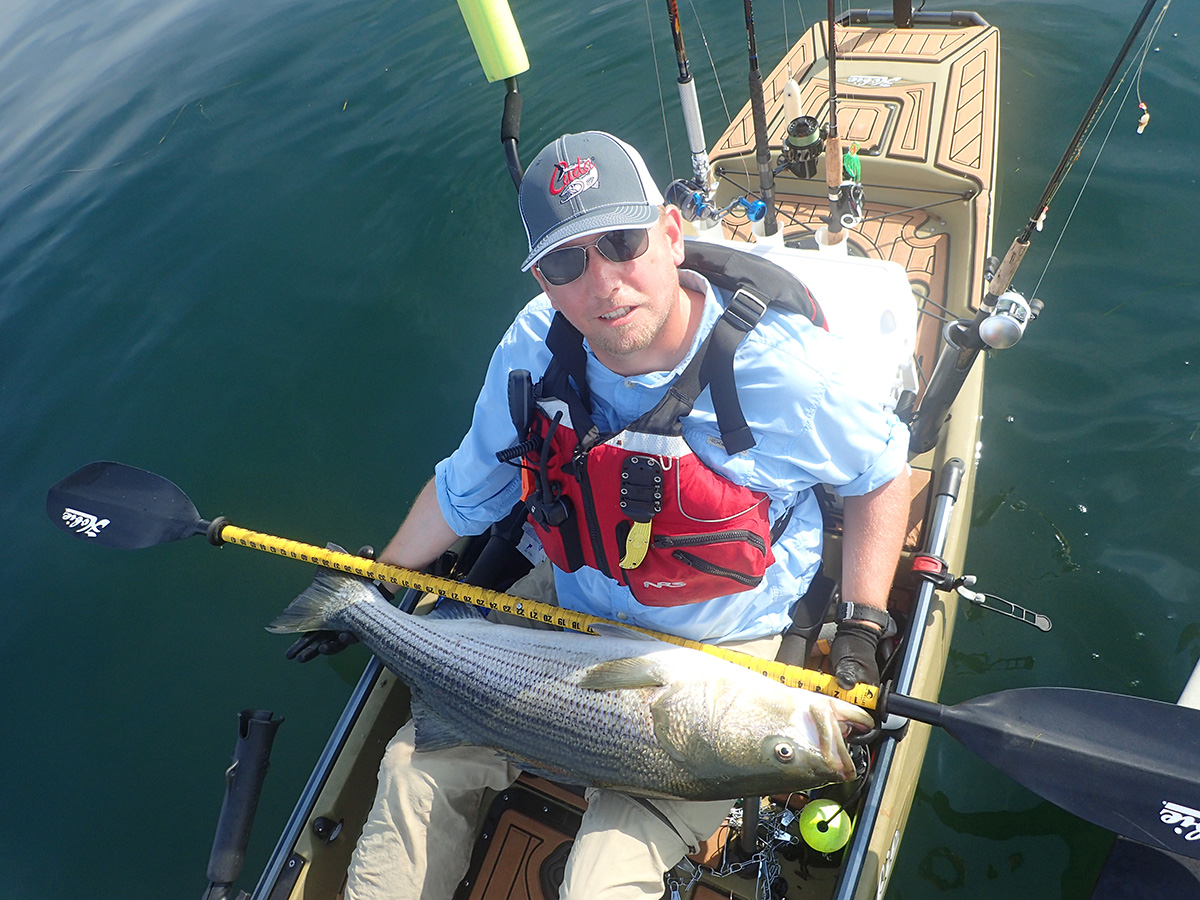
Live Bait Opportunities
Summertime means plenty of fresh bait for livelining. When adult bunker are present I always have a snagging hook ready to go. In this scenario, I use my spinning setup and clip a snagging hook to it. When a school of bunker is located I cast into the school, allow the snag hook to sink, and reel in at a fast tempo. Once a bunker is snagged you’ve got two options. Some simply snag and drop and go into free spool. I prefer to have a second rod on standby with a 10/0 Mustad Demon Circle. I grab my livelining combo (Maxel Ocean Max 06 non-level wind reel topped with 30-pound braid paired with a Tsunami TSSPJC761XH). Once I have the bunker over the rail of my kayak, I quickly grab the hook that is already rigged up on my livelining setup and go one of two ways:
- If in faster current I pierce the hook through the lower jaw and up through one of the nostrils of the bunker (sort of like a live eel). This allows the bunker to swim freely and yet prevent it from spinning in swift water.
- When fishing more protected areas, I opt for a bull ring style rigging by inserting the hook point into one of the nostrils of the bunker and hoop it through, exiting the second nostril.
These two rigging options have you covered for any scenario that is encountered. After hooking the bait, lob it out and engage the clicker on the reel while leaving it in free-spool. Sit tight and be ready for that veracious strike. Your first instinct will be to drive that hook point home. The benefit of using a circle hook here is that I drop the rod tip or as some call it bow to the cow and slowly pull up and start reeling. There is no need to sink that hook into the fish’s mouth as it will find the corner every single time.
Now is the time to capitalize on those pre-dawn trips. Life is often hectic so slow things down for a while and spend some time on the water. There will come a day this winter where you had wished that you had gone out a few more times. I can guarantee that it will be much more fun than mowing the lawn! I can’t however guarantee that your blood pressure won’t shoot through the roof after that first topwater explosion.

